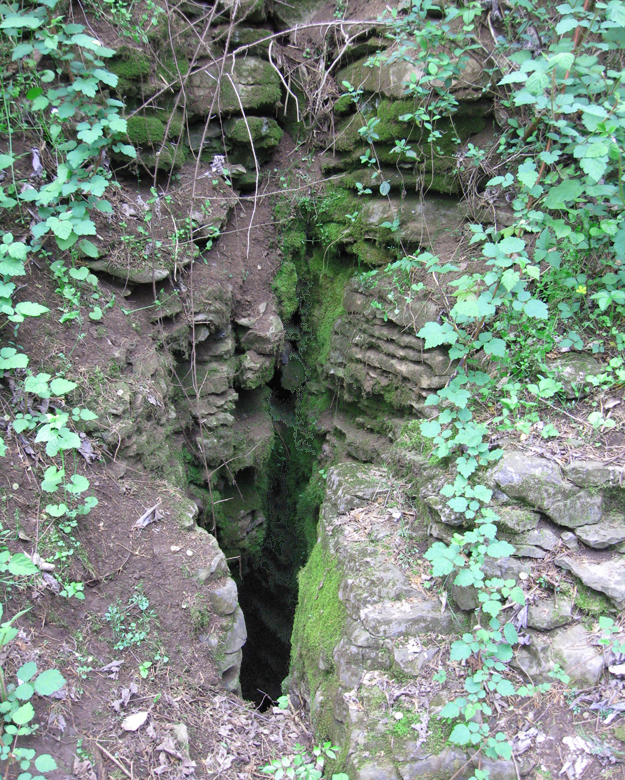Strasburg > Hupp’s Hill Civil War/Karst interpretive walking trail
The Keyhole Cave trail marker CWK 6 is on the Hupp’s Hill Civil War/Karst Interpretive Walking Trail at the Hupp’s Hill Civil War Park north of Strasburg, Virginia.

How Strata Shaped Strategy:
The Hupp’s Hill Civil War/Karst
Interpretive Walking Trail
CWK 6 – Keyhole Cave
As Keyhole Cave is situated along the trench line, it is likely that wiry soldiers slithered down into this wild cave, which contains human artifacts of indeterminate age (pictured below).
Bat specialists who surveyed Keyhole Cave in 2006 found neither bats nor guano, but did note actively growing soda straws and flowstone formations and also signs of animal life throughout the cave’s small passages and rooms.
Bats have a higher risk of predation in caves with narrow entrances because snakes and other predators can easily snare bats as they fy in and out for nocturnal hunting. Because of their small throats, neither Keyhole Cave nor Hupp Cave (CWK 3) is a desirable roost for bats.
Wall staining in Keyhole Cave, however, suggests bats hibernated here in the past, and conditions are still favorable in this cave’s use as a hibernaculum.
Captions to the photos (left to right):
Salamander
Horse jawbone
Boot, rusted shovel and pail
Well preserved Anura (frog or toad)
A caver emerging from Keyhole Cave
Cave entrance from below
A caver makes her way through Keyhole Cave’s narrow passage


The mouth of Keyhole Cave
